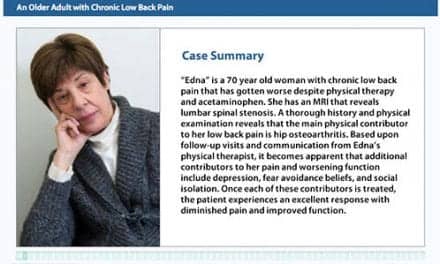Determining effective treatments for knee instability should be an important priority to help prevent falls among older people, according to a recent study.
Knee buckling is a symptom of knee instability, especially among those with knee pain and knee osteoarthritis. Knee instability in older adults may indicate an increased risk of falling, according to a media release from Wiley.
In a study published recently in Arthritis Care & Research, a journal of the American College of Rheumatology, Michael Nevitt, PhD, of the University of California, San Francisco, and his colleagues prospectively studied 1,842 participants in the Multicenter Osteoarthritis Study (MOST) who were an average of 67 years old at the start and who had, or were at high risk for, knee osteoarthritis.
At the end of 5 years, 16.8% reported knee buckling; and at the end of 7 years, 14.1 percent had recurrent falls. Bucklers at year 5 had a 1.6 to 2.5 times higher likelihood of recurrent falls, fear of falling, and poor balance confidence at year 7. Those who fell when a knee buckled at the start of the study had a 4.5 times, 2 times, and 3 times higher likelihood 2 years later of recurrent falls, significant fall injuries, and fall injuries that limited activity, respectively, and they were 4 times more likely to have poor balance, the release explains.
“Falls, injury from falls and poor balance confidence are extremely common and debilitating problems in older people,” Nevitt says in the release. “Fortunately, it may be possible to treat knee instability and prevent knee buckling with targeted exercises. Joint replacement surgery can also improve knee stability.”
He adds in the release that pain is the predominant symptom of knee osteoarthritis, and that symptoms of instability, such as knee buckling and falls, may be overlooked by treating professionals.
He advises health professionals to query their patients with knee OA about instability, buckling, and falls, and to work with them to take preventive actions, including proper use of walking aids, leg strengthening, and appropriate footwear.
[Source(s): Wiley, Science Daily]





